Tired of Speed Parades and Gimmicky Races? Check out Supercross
Downtown Detroit in February is a crisp cold. The parking deck across from Ford Field is empty and quiet. A small line of people has formed outside the main entrance to the stadium. I sneak past the lines and use my press credentials to pass through a chain link fence, then a metal detector, operated by a surprisingly chipper security guard.
The silence is broken by the powerful thump of a 450cc four-stroke engine as it zips down the alley inside the stadium. The rider wears a puffy coat over his riding gear and a mechanic is hanging on the back, his feet dangling off to the sides. As they turn down the ramp that leads to the floor of the field, the rider thumbs the kill switch in observance of the “dead engines only” sign. It’s silent again, though the smell of race gas lingers.
Supercross has arrived in Detroit.
A string of mild winters in Michigan has produced a relative drought of motorsports events. Since it isn’t cold or wet enough for ice racing or snowmobiling, those seeking a horsepower high are left either to travel or to enjoy their favorite sports through a screen. Which is why I’ve come four hours south from Traverse City to appreciate the Detroit round of AMA Supercross.
Supercross has been a highlight of the motorcycle race season for decades, with a big rise in popularity in the 1990s and again in recent history. With a schedule of 28 events for the 2024 season, this race series functions unlike any other. Tons of local dirt is trucked in and these tracks pop up nearly overnight in sports stadiums and concert venues, often the biggest in town: When Taylor Swift came through Detroit in 2023, she played at Ford Field. Motorcycles from nine manufacturers—many fielded by teams with factory support— are at the starting gate every event, and the commentator booth is occupied by James Stewart and Ricky Carmichael, some of the greatest to ever compete in the sport. (Imagine if Dale Earnhardt Jr. and Tony Stewart announced the Coke 400.) All the races are streamed live on NBC’s Peacock app with race recaps and highlights arriving on the NBC Sports YouTube channel for free in the days that follow.
This marks my second year making the journey south to join and if there was one thing I learned last year, it was that I showed up far too late in the day and felt as though I missed part of the action despite being there for the heat races and main events. This year I showed up early—at 8 a.m., before the doors opened to the public—and poked around to see just how relaxed it might be without the laser show, fireballs, and big-screen replays.
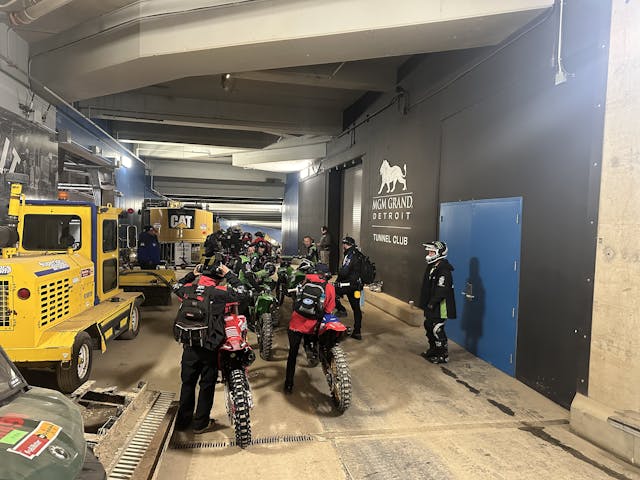
At the end of the tunnel stands a cadre of mechanics with spotless Hondas and Kawasakis leaning on their hips. They look downright bored. T-handle wrenches clink softly as they hang on the backpacks and tool pouches, and the dull chatter of the riders is the only noise, until a rider walks by, each step a squeak—new boots. The riders jump and dance, attempting to stay warm and break the 32-degree air. They begin to look around. None has a watch, but their sense of timing is impeccable. Practice was supposed to begin at 8:00 a.m.; it’s now 8:06.
In the eyes of several racers, Detroit is “the first real main event” of 2024. It was round 10 last year, and by then, multiple parts of the championship were starting to settle down. This year, the traveling octane festival made the Motor City its fifth stop. The races thus far have been tales of survival due to open-roof stadiums and inclement weather, muddy, sloppy situations that produced four different winners. In a 28-race championship, there’s plenty of time for a clear winner to emerge, but, five races in, that fact is not stopping anyone from enjoying the way it is all up for grabs right now.
The practice rounds click off like clockwork, despite starting a little late. The stands are near-empty as the riders from the two classes, 250cc and 450cc, cycle through 15-minute time slots designed to allow them some time to learn the track. A bit of extra high-viz gear stands out on the sidelines. While a normal team might have a single mechanic per rider standing beside the track during practice, one bike is surrounded by a huddle of people. A few hold clipboards. All have looks of focus on their faces. Emblazoned in yellow on the back of their black jackets is one word that represents who they were and what they want to do tonight: Triumph.
The focus on the team’s faces makes sense. Today is the debut of Triumph’s all-new TF 250-X motocross bike and the first time it has turned laps on anything other than a practice course. Riders Evan Ferry and Jalek Swoll are attempting to overcome the highly competitive field and also the teething problems that come with any new machine—all at once. As the practice rounds wear down, team Triumph appears to have potential … but potential is not what wins races.
The 65,000 fold-down seats that rise from the track level are starting to fill up: The heat races are set to begin at 2:30 p.m. The dull roar of tens of thousands of enthusiasts chatting amongst themselves in the seats, plus the growl of heavy machinery re-shaping and repairing the track surface, define a new normal for the noise level, one that is quickly eclipsed as the PA system fires up and the commentary begins.
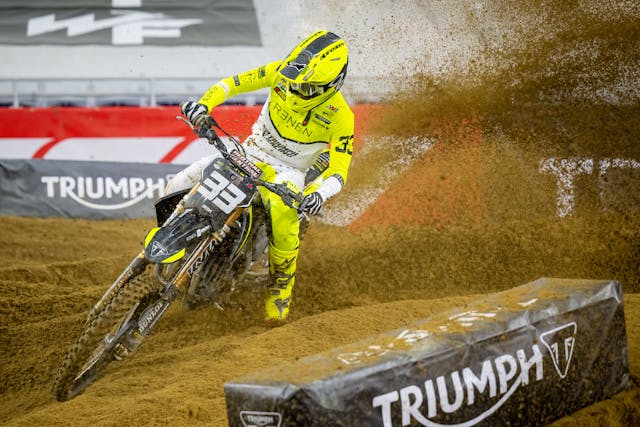
The crescendo builds as the lights go down and a deep voice announces the feature class 450 riders just before the big show of heat races and of the main events. The lights, flamethrowers, and big screens all dance as the riders make quick circles of the floor while waving to the 52,000 fans that now fill the stadium. The week prior, the stadium had broadcast the Lions’ game that ended Detroit’s Superbowl bid; today, a crowd goes wild as Haiden Deegan, one of the 250 class favorites, circles the floor with a Jared Goff jersey over his riding gear. Every rider on the starting gate has on a riding jersey, and a good portion of those in the stands do, too. Everyone stands for the national anthem before watching as the first waves of riders line up behind the tubular gate that holds riders on the start line. The revs rise on all the bikes, ready to launch into turn one, and the night reaches its peak.
Thousands of hours of testing and computer simulations cannot guarantee a race win. The surface of the track changes lap by lap, and racers must place in the top nine of a heat race—or in the top four of the last chance race—to make it to the big show at the end of the night. Both Triumph riders find themselves in the same heat race. Luck doesn’t go in the direction of rookie Evan Ferry; he takes the long way into the main event by competing in the drama-filled last-chance qualifier.
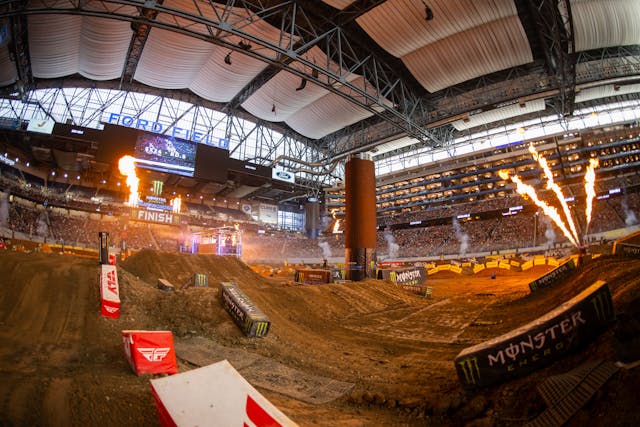
As the main events get underway, the whole venue fills with energy. Standing at track level, you feel the tension that underscores the Herculean nature of the feats these riders are about to perform. The largest jumps can send riders flying nearly 70 feet, a height that puts them even with spectators halfway up the stadium seating. The racing is tight and at times chaotic: Lap times under one minute mean the leading riders deal with lapped traffic early in the race, along with the changing track conditions.
Two riders lock handlebars going into turn one of the 250 class’s main event, sending bikes and riders tumbling to the dirt. One of those is Evan Ferry and his Triumph TF 250-X. Fellow Triumph rider Jalek Swoll fought his way to sixth place overall; not the high note Triumph wanted to sound. But other, more established brands fail to get a bike and rider into the top ten, too. With the sixth-place finish, Triumph has proven it can be a contender. Hopefully, with the data provided from this first race, the team will arrive at the round in Arlington, Texas, even more capable and better sorted.
Only after the last bike rides up the tunnel, the commentators sign off, and the crowds herd out onto Brush Street does the stadium feel still and quiet again. Well, almost quiet. The team building the whole show is already using heavy machinery to move signs and equipment, preparing to load the tractor trailers that will roll the whole spectacle off to the next venue.
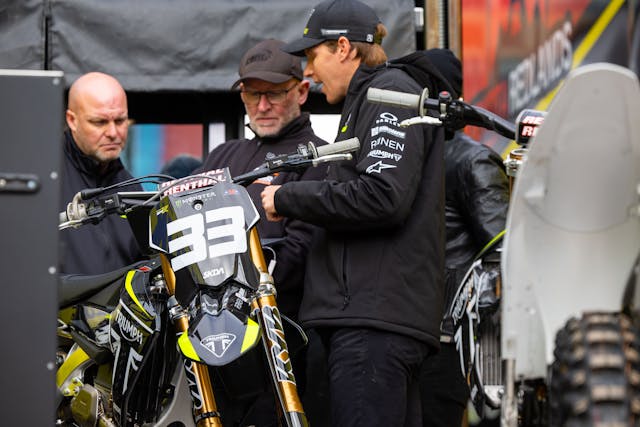
Supercross has been very carefully walking the fine line between entertainment and sport. After starting to watch a little more seriously in the last few years, I can see how a casual observer may easily define it as one or the other. Those who take the time to pay attention during the quiet parts of the show can easily pick up on more, though. In a world where many motorsports are turning into speed parades or races full of gimmicks, Supercross is something special.
***
Check out the Hagerty Media homepage so you don’t miss a single story, or better yet, bookmark it. To get our best stories delivered right to your inbox, subscribe to our newsletters.
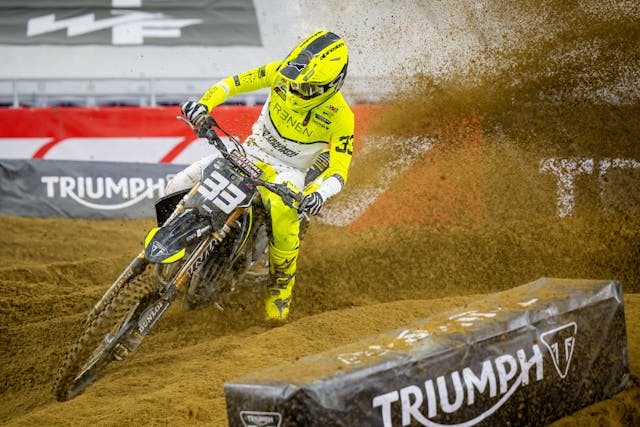
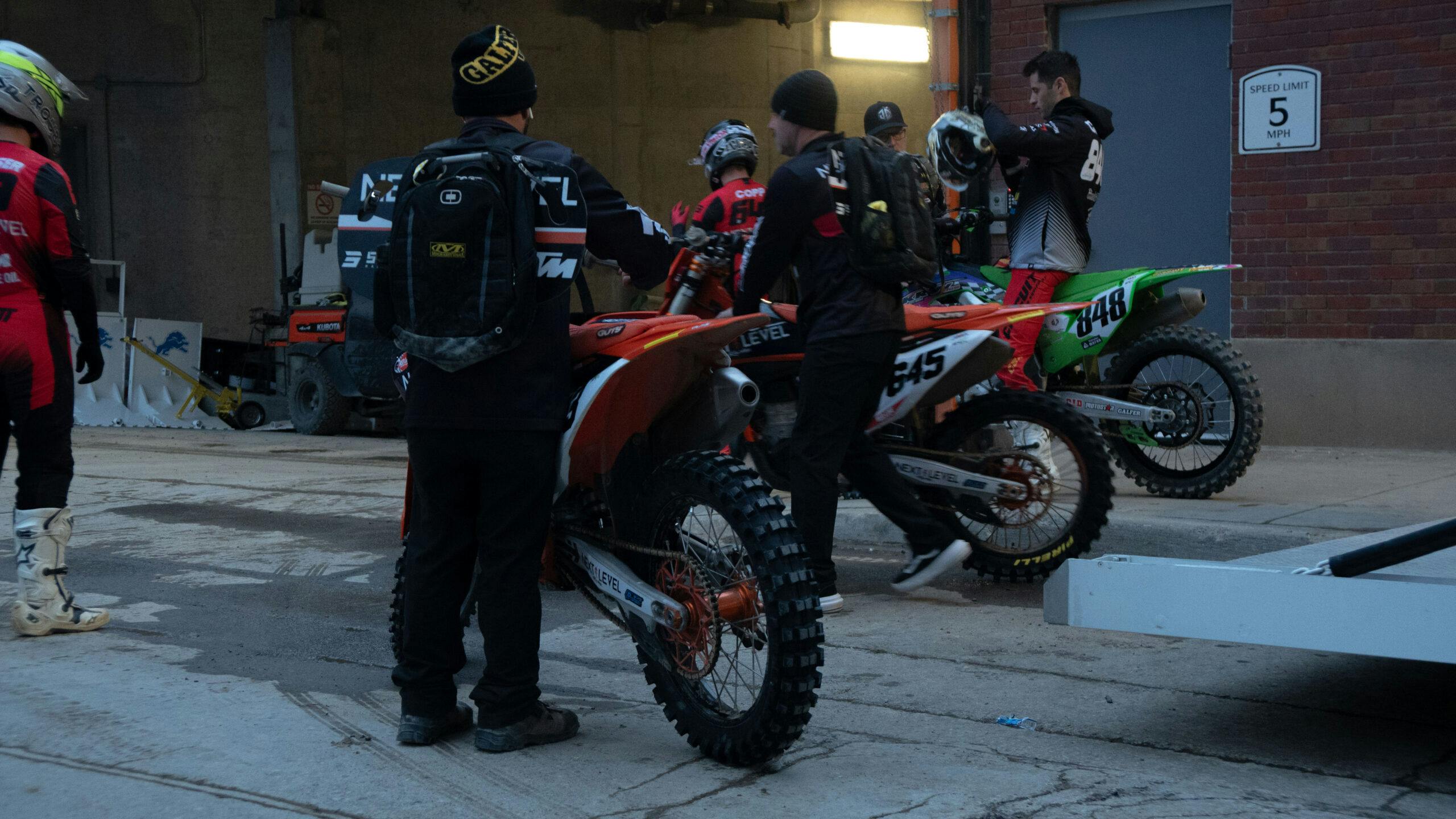

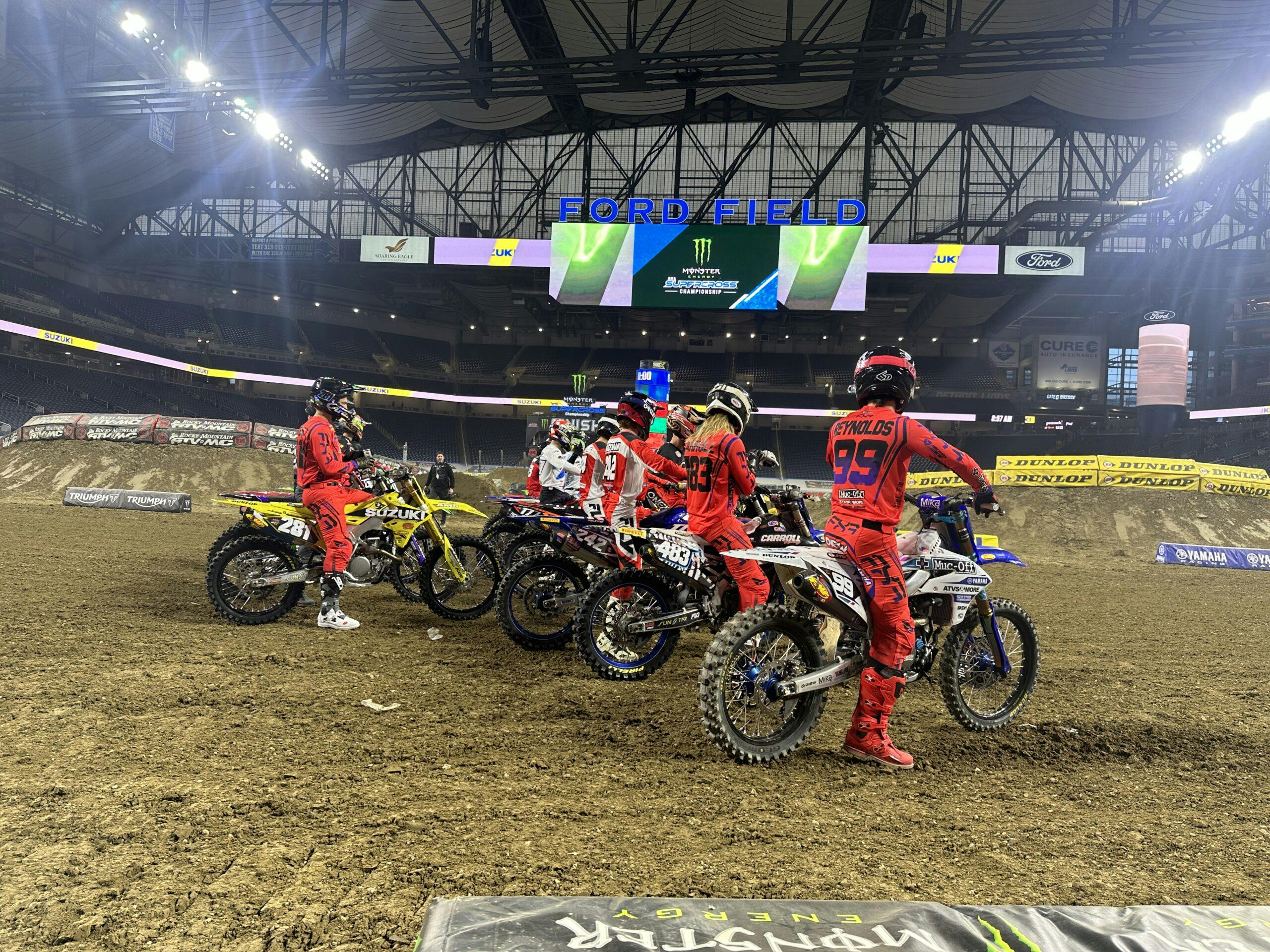
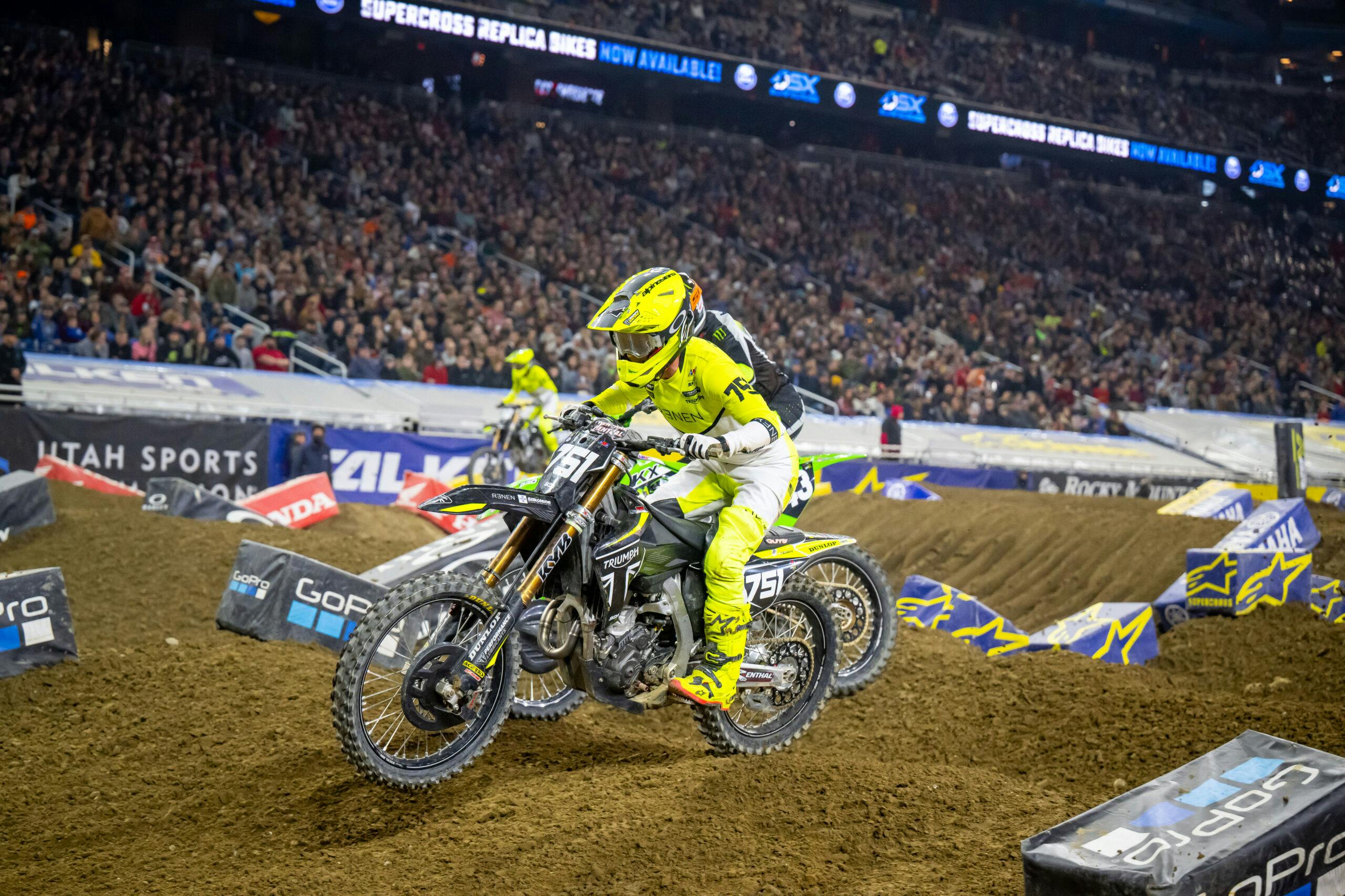
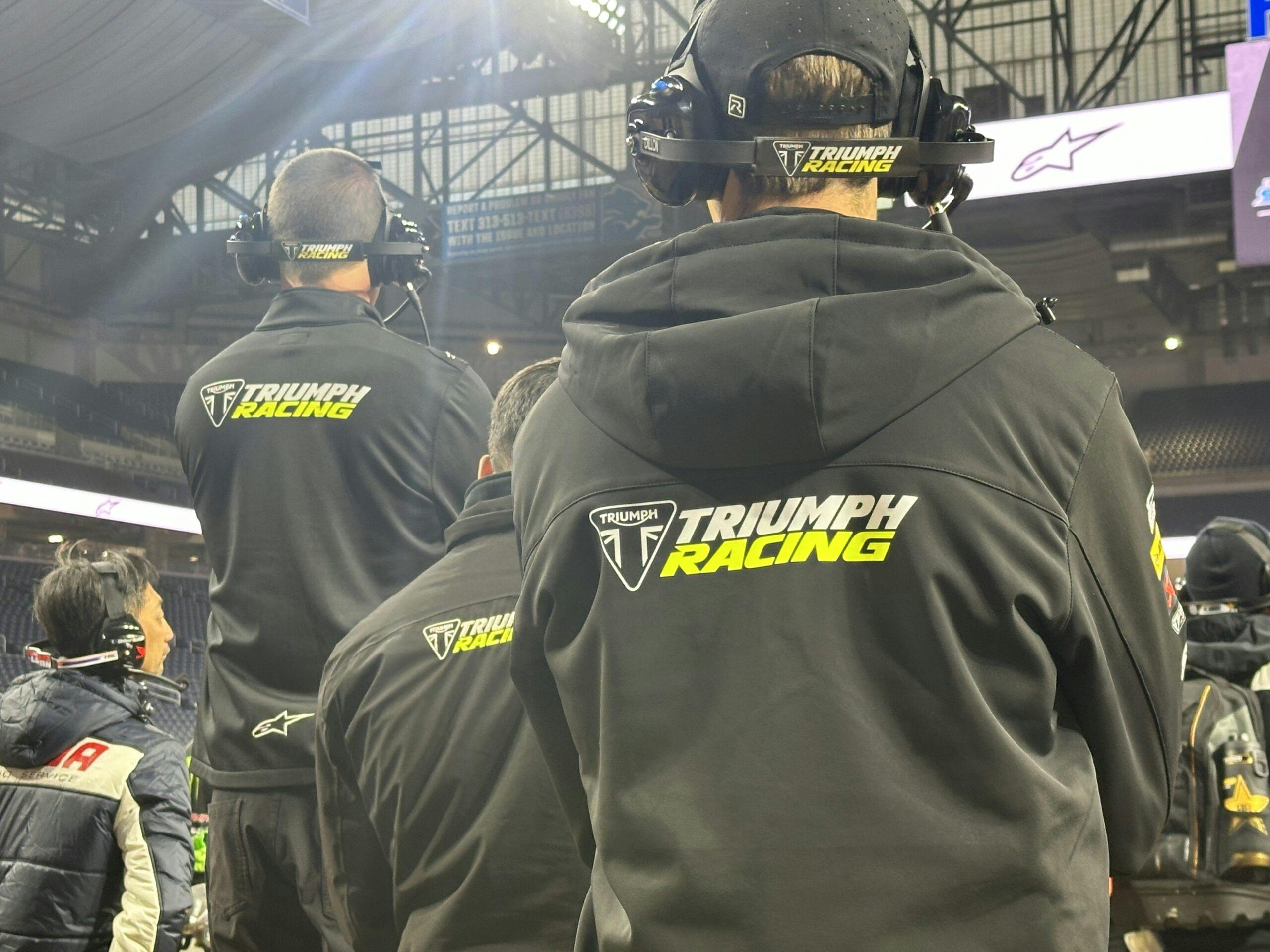
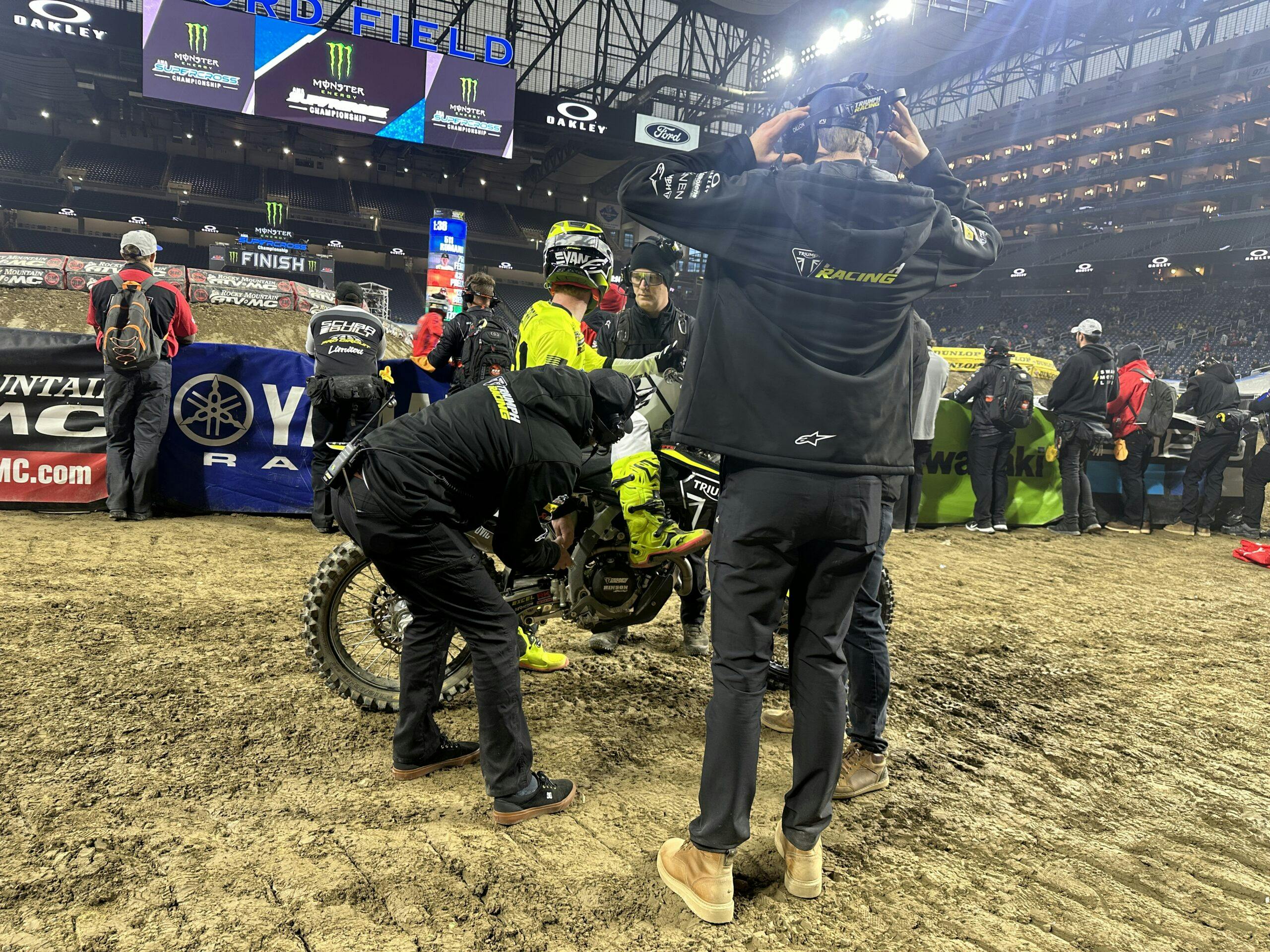
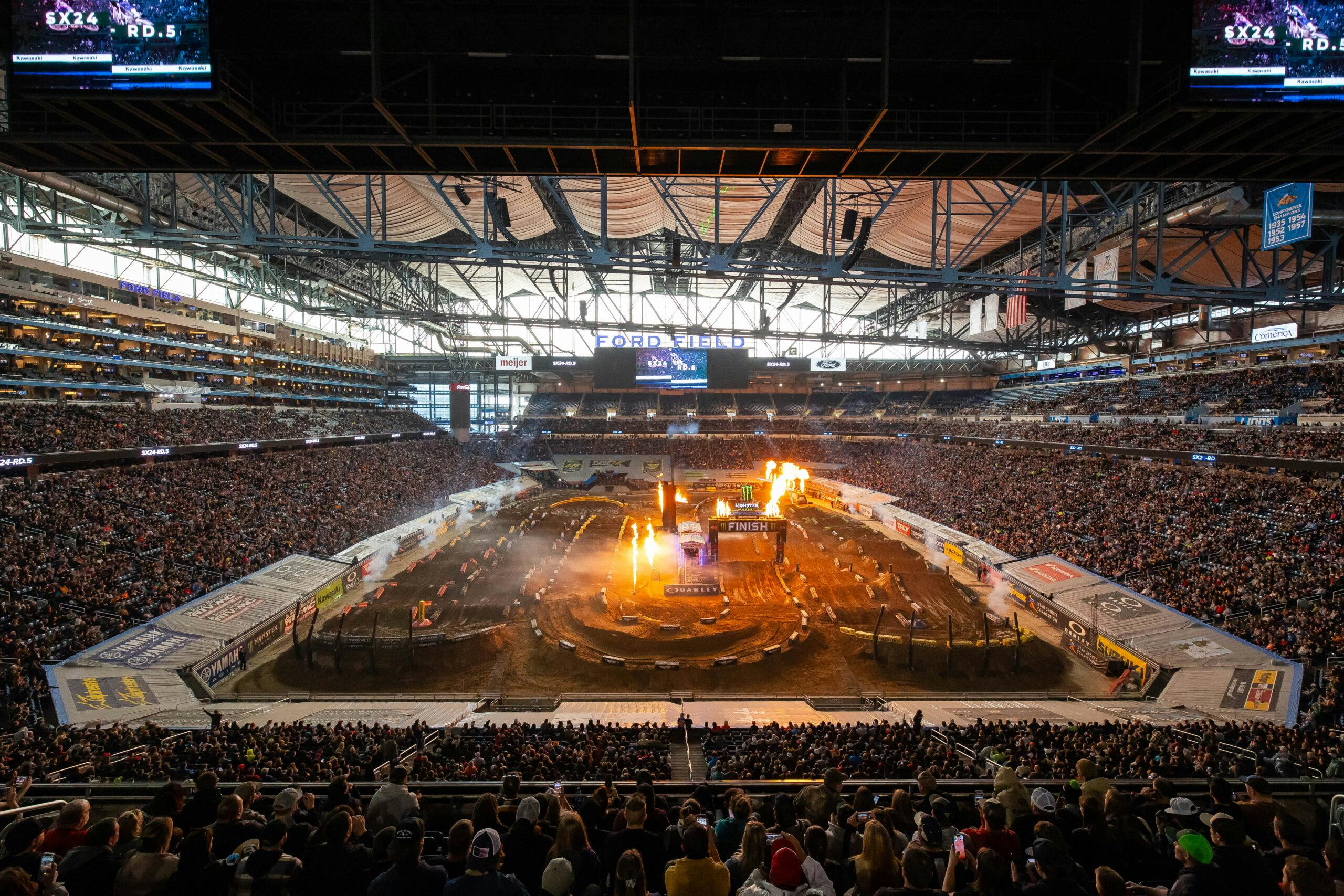



I have been arguing that Supercross is some of the best racing anywhere for years – ever since I first raced a vintage dirt bike. The jumps and the dirt throw off a lot of fans of other types of racing as some sort of gimmick, but jumps are just corners in the third dimension – you need to setup for them and hit them at the right speed, with precise throttle control. The dirt surface makes the available traction change lap by lap.
So what you have is three dimensional motorcycle road racing on a variable low traction surface, and vehicles very equal in power.
Bryan said most of what I wanted to say. As a long time fan and former recreational racer in the early 70’s the last year or so has been really exciting in the motocross world. A very tight points battle is developing. And yes, the races and tracks they race on are an ever changing concern for riders. A miscalculation usually means physical injury. If not physical, a points loss that could put them out of contention. And with so many races they have to be in top physical and mental form to compete competitively. Once classified as one of the most physically demanding sports in the world. so with that all that being said, you owe it to yourself to go see one. The pounding, the jumping, the visceral atmosphere of these events gives you a whole new appreciation for what these underrated athletes do. If you ever have tried to race motocross you know what I mean.
Triumph is coming out of the gate strong. Remember that in the modern motocross era the Japanese have dominated for the last 50+ years. Their technology and riders are the pinnacle. So for Triumph to come out of the gate with a 6th place finish is almost unheard of. They seem to be doing it right. Thoroughly enjoy the excitement these races produce. So four wheel fans come on over for non stop action. I’m a little biased, hahaha!
I think the outdoor MX racing is so much better than Supercross IMHO. It is a shame that they ruined even that by basically getting rid of two stroke bikes by changing the rules so 2-strokes would half to be 1/2 the displacement (125cc 2-stroke vs 250cc 4-stroke, 250cc 2-stroke vs 450cc 4-stroke). They also took out the 125cc class too – just plain stupidity. The 125cc was always the stepping stone for the bigger classes. I remember when they had 3 classes of 125, 250 and Open (450cc and up). 2-stroke bikes are cheaper (and used to be much faster and lighter) and are so much easier to maintain. There was nothing like watching the pros back then at the opening gate drop in the 125 class – like a wild bee/hornet onslaught. Bring back the 2-strokes, the 125 class and let 2-stokes compete evenly against the 4-strokes to make it interesting again.
Supercross is fun but I would prefer to see it in an outdoor environment / track.